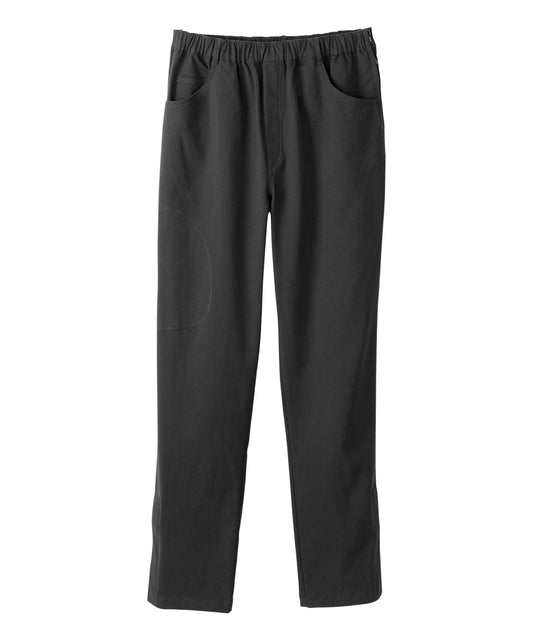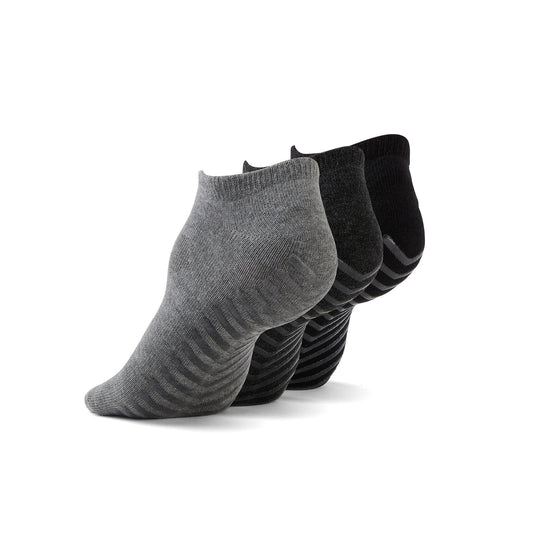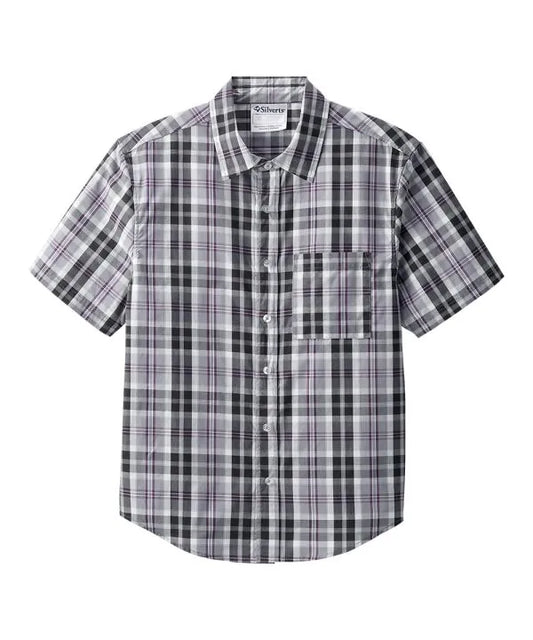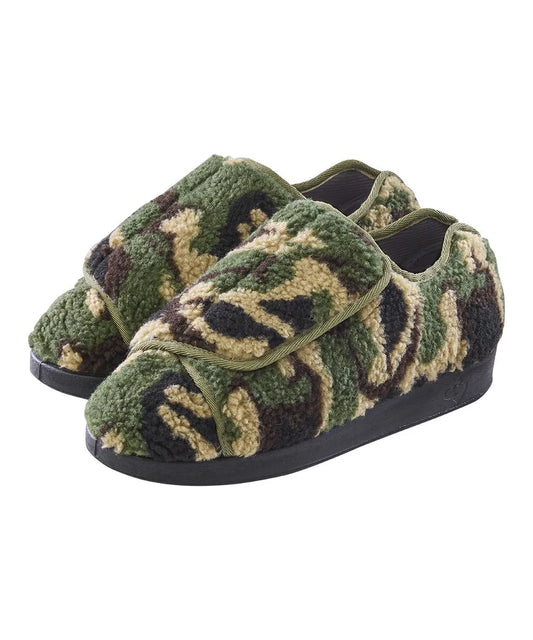Adaptive clothing is crucial to supporting the dignity and independence of post-surgery patients during the healing process. Post-surgery adaptive clothing is suited to a wide range of recovery plans for people with all physical capabilities.
Preparing for post-surgery recovery is a different journey for each individual. The hospital may provide loved ones with a unique discharge plan outlining their recovery path. During the healing process, post-surgery patients face both physical and mental health challenges. Ensuring that individuals feel supported by not only their communities but also their wardrobes is essential to recovery. In this blog, we will list five clothing items to help post-surgery patients recover in style.
What Post-Surgery Patients Can Expect After Surgery
It is important to receive a post-surgery recovery plan when you are discharged from the hospital. Typically patients are released for at-home recovery when they are deemed capable of eating and drinking, taking pain medication, and controlling bowel movements. Healthcare providers and patients should work together to ensure that the recovery plan at home covers a few key areas:
-
How should medication be taken?
-
Are follow-up tests required?
-
How routinely should bandages be changed?
-
How can pain be managed?
-
What level of physical activity should be achieved?
-
Are there foods and beverages that should be avoided?
Each recovery process has a different timeline! Patients play a vital part in their own healing process. Daily patience, resilience, and diligence are key to staying on track to a full recovery. Depending on the surgery, recovery times can range from days to months before post-surgery patients can regain their respective levels of mobility.
Recovery At Home Post-Surgery
Post-surgery recovery should be a balance between rest and staying active. Recovering from surgery requires immense patience from individuals who may be dealing with a long or strenuous healing process. While frustration is common, it is key to follow your healthcare provider's post-surgery instructions. Extending patience and kindness to yourself is important to ensure that you are taking care of your physical and mental well-being during the recovery journey.
While rest and patience are crucial, exercise post-surgery is also necessary for regaining bodily functions. Exercise helps the body strengthen itself after physical trauma caused by surgery. Low-intensity activities like taking short walks at least three times a day will help to speed up the healing process. Engaging in physical activity post-surgery can even help to prevent blood clots and infections. Remember, that each recovery process is unique and your healthcare provider may not instruct you to engage in physical activity. Simply getting out of bed post-surgery is an accomplishment!
Planning ahead of time is crucial to ensuring you stay occupied during at-home recovery. For those who are unable to engage in physical activities, keeping mentally occupied with hobbies is a great way to prevent boredom.
To occupy your healing time, try to participate in enjoyable activities that you may not have time to partake in during your typical busy lifestyle. Picking up that book you have been waiting to read, knitting that scarf you have been wanting to make, or watching that television series your friend recommended. Having a designated recovery period means you finally have time to enjoy your favourite hobbies!
Why Adaptive Clothing Helps Post-Surgery Recovery
Adaptive clothing is designed for people with disabilities, the elderly, or anyone with mobility or dexterity issues. People with physical or mobility challenges often face difficulties dressing in regular clothing. Adaptive clothing employs thoughtful design features to meet the needs of any post-surgery recovery patient. Some features include:
-
Velcro closures: to ensure easy removal
-
Elastic waistbands: to provide comfort and accommodate different sizes
-
Large buttons or zippers: to make them easy to hold
-
Easy-to-reach closures: to offer easy access on the front or side of the garment rather than the back
Adaptive clothing is not only beneficial to safety but also to the dignity of post-surgery patients. Maintaining independence in daily activities is important for post-surgery patients. Adaptive clothing empowers individuals who may rely on loved ones during the healing process by allowing them to dress themselves, the way they want to.
For those experiencing post-surgery mobility issues, they may encounter difficulties with traditional clothing for the first time. Loose-fitting garments can impede mobility aids and lead to accidents. To avoid frustration in the wardrobe, consider equipping your home with adaptive clothing for your post-surgery recovery.
Here are five adaptive clothing items you should consider to ensure that your post-surgery recovery is in style!
Unisex Recovery Pants with Side Snaps
June Adaptive offers a comprehensive range of adaptive clothing, like the Unisex Recovery Pants with Side Snaps. These pants are an excellent choice for post-surgery recovery at the hospital and home. The recovery pants offer comfort and leisure with easy tear-away features that are designed for seamless access to the waist, hips, and upper and lower legs.
Unlike regular clothing, the snaps along the side seams eliminate the need to completely undress making them ideal for post-surgery recovery. Easy access snaps are particularly helpful for patients dealing with doctor visits, casts and catheters, and for individuals who experience incontinence.
The recovery pants are crafted with ultra-soft modal fabric with antimicrobial technology to ensure that the healing process is comfortable and seamless. To reduce straining the back, there are also internal pull-up loops to minimize bending when putting them on.

Everyday Crew Anti-Slip Socks
Post-surgery recovery can prompt balance and mobility issues. Research shows that preoperative falls are twice as common as falls in the general community because they relate to a patient's increased dependence during post-surgery recovery. This leads to an increased risk of falls and accidents, making it important to invest in anti-slip socks for at-home recovery.
June Adaptive offers Everyday Crew Anti-Slip Socks with unique non-slip “tread” pattern grippers. The pattern grippers are durable and ensure that your loved ones are safe from fall accidents at home. Made with a luxury cotton blend, these socks ensure all-day comfort and safety at home.

Extra Wide Comfort Slippers
Post-surgery patients can find comfort and relief in the convenience of easy-to-wear slippers specially designed for their unique needs. Following surgical procedures, traditional shoes can often feel constricting and uncomfortable, making the choice of footwear critical during the recovery period. This is where adaptive slippers step in as a valuable tool to enhance the well-being of individuals on their healing journey.
June Adaptive offers Men’s Extra Wide Comfort Slippers to support post-surgery patients with swollen feet and ankles. Designed with a wide fit to ensure easy shoe access, the ultra-comfortable slippers are ideal for people who are diabetic or have feet with edema.
The shoe's cushy memory foam insoles and slip-resistant soles can help post-surgery patients feel protected and capable after their hospital discharge. Additionally, the slipper's adjustable closing strap is made to adapt to swelling feet.

Men's Seated High Back Rise Denim
Post-surgery recovery does not mean individuals need to stay at home. Some patients may be able to engage in outdoor activities during the healing period. Staying in style during recovery can aid individuals in feeling confident to venture outside each day.
June Adaptive carries the Men’s Seated High Back Rise Denim jeans, tailored for a natural seated fit for people who are wheelchair dependent. The pants have an extra-high back rise and front snap closure to contour around the body in a flattering fit.
Unlike regular jeans, these pants are wrinkle-resistant and crafted from cotton denim to remove unnecessary maintenance like ironing. People who are wheelchair-dependent or experience reduced mobility as a result of surgery can feel confident and comfortable in their daily activities with adaptive jeans.

Conclusion
Post-surgery recovery is a unique and challenging journey for every individual, and it requires careful consideration and preparation to ensure a successful healing process. The key to a successful recovery lies in following a personalized post-surgery recovery plan, maintaining patience, and exercising diligence throughout the healing period. Each person's recovery timeline may vary, and it is crucial to work closely with healthcare providers to address specific needs and concerns.
Investing in adaptive clothing not only ensures practicality and safety but also uplifts the spirits of post-surgery patients. Adaptive clothing promotes confidence and well-being during the road to recovery. By embracing adaptive clothing, patients can focus on healing while knowing their physical needs are supported and cared for. Choosing adaptive clothing is a thoughtful and empowering step towards making the post-surgery recovery journey a comfortable and stylish one.















